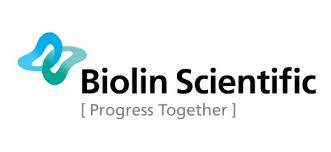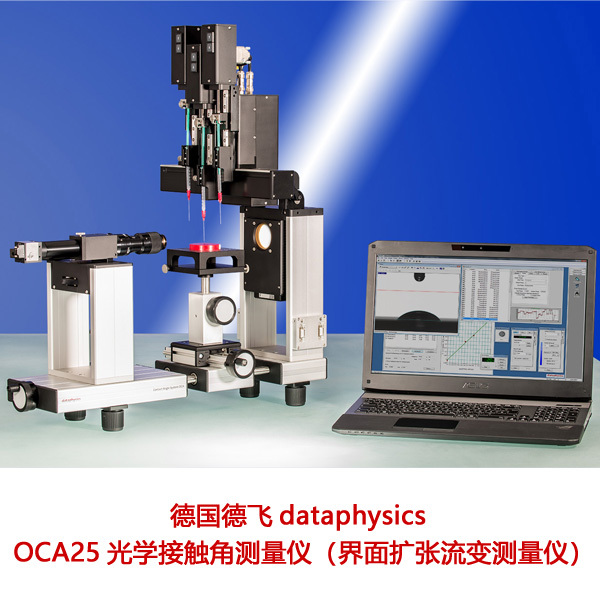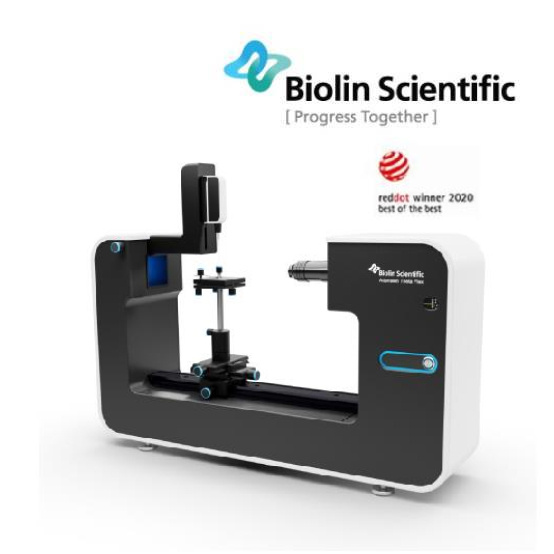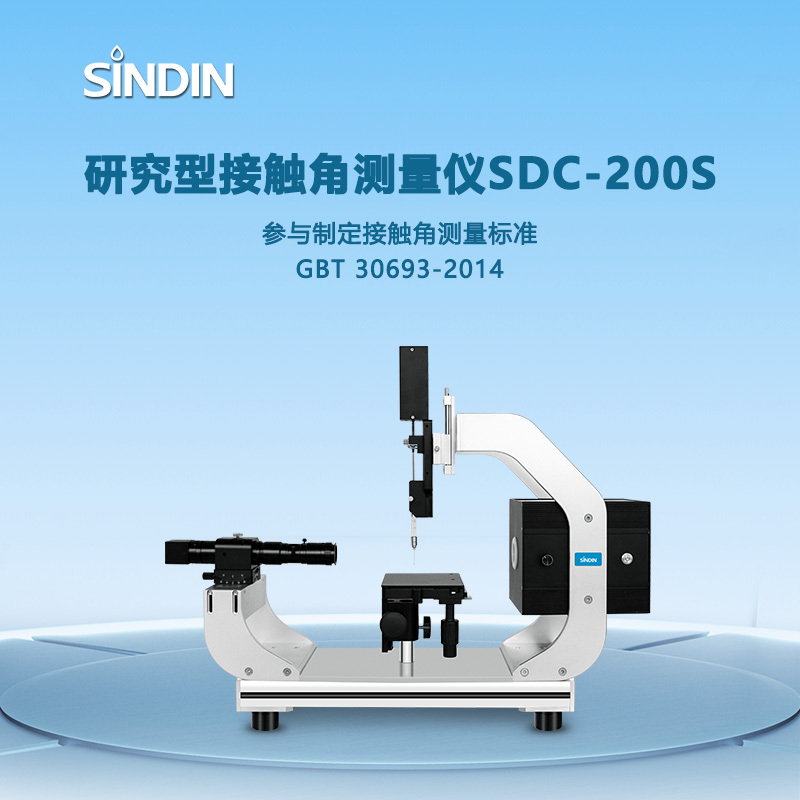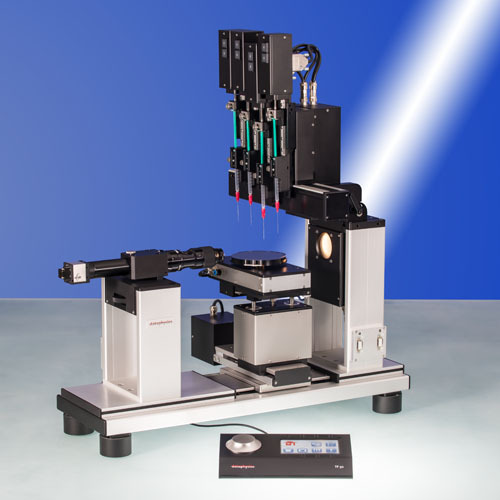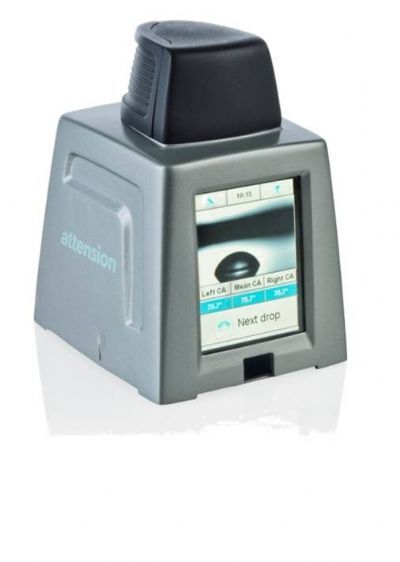
方案详情
文
自清洁涂层在商业产品中有着广泛的应用潜能,并可降低清洁过程中的劳动成本,使得其相关研究变得愈来愈多。此类涂层应用广泛,如门窗玻璃、粘合剂、纺织品及涂绘产品。例如,带有自清洁涂层的织物可以节省清洗过程并延长织物使用寿命。自清洁涂层分为两类:疏水类涂层与亲水类涂层,当有水存在时以上两种涂层均可达到自清洁的目的,而其润湿性及亲疏水性质可用表面张力仪进行测定。
方案详情

attension APPLICATIONNOTE 3 Self-cleaning coatings This application note illustrates how the Attension Theta OpticalTensiometer can be used to characterize surfaces such as selfcleaning coatings. The growing interest towards self-cleaning coating technologiesis due to their high potential in commercial products and theirability to reduce cleaning labour costs. These coatings have awide variety of applications such as window glasses, cements,textiles and paints. For example, a fabric with self-cleaning prop-erties would save cost in fabric cleaning and extend the lifetimeof the textile1. Self-cleaning coatings can be divided into twocategories: hydrophobic and hydrophilic coatings. Both of thesetypes are able to clean themselves when water is present. Wet-tability, hydrophilicity and hydrophobicity can be characterizedby using tensiometers. A common case in nature is the "lotus effect" where waterdroplets can be seen on the surface of a lotus leaf due to itshydrophobicity.Hydrophobic coatings have high water contactangles, above 90 degrees. The self-cleaning coatings are usuallysuperhydrophobic as their water contact angle is greater than150°. These surfaces are highly water repellent and water tendsto form spherical droplets that roll away from the surface, carry-ing dirt away. It is well-known that contact angle is determined byboth, the chemical and topographical properties of a surface. Asuperhydrophobic surface can be obtained only if the hydropho-bic surface is roughened on the micro and nanometer scales.Therefore,the efficiency of a self-cleaning coating is dependenton the roughness and chemical composition of the surface anddirt particle adhesion to water droplet. These surface propertiescan be assessed using an optical tensiomter. THE LOTUS EFFECT is a special case of waterrepelling, or hydrophobic, behavior 1. Water washes dirt away Figure 1. The principle of hydrophilic self-cleaning coating. UV illumination makes the electrons of the TiO2-surface to break watermolecules into hydroxyl radicals. (2)These radicals react with organic dirt, breaking them into smaller particles(3). The small particles areeasily washed away by water (4)2. The hydrophilic self-cleaning coatings are based on photocataly-sis: when exposed to light, they are able to break down impuri-ties. Self-cleaning windows from this coating material are alreadycommercially available. These kinds of windows act in two waysto clean its surface. The organic dirt absorbed on the windowis broken down chemically by photocatalysis and water washesthe dirt away by forming sheets due to the low contact angles.Titanium dioxide (TiO2) is a well-known coating for hydrophilicself-cleaning surfaces2 due to its favorable physical and chemicalproperties. It is non-toxic, chemically inert when there is no lightpresent, inexpensive, easy to handle and already well-knownin household chemicals (pigment in cosmetics and paint). Thestrong oxidation power and superhydrophilic properties of titani-um dioxide make it a good material to be used as a self-cleaningcoating especially for outdoor purposes. The self-cleaning effectof titanium dioxide is illustrated in Figure 1. Case study: TiO2 coating on polymers Kasanen et al.3 have studied the effect of TiO, photocatalyticcoating on polymer and glass surfaces by using an opticaltensiometer. The surfaces were first coated with a waterbornepolyurethane (PU) dispersion,after which a suspension contain-ing TiO, particles was injected on the surface of the PU. Thesamples were also plasma treated by using oxygen as a reactivegas, coated with palmitic acid and finally UV-radiated to conductphotocatalytic studies. Static water contact angles of the sampleswere measured with an optical tensiometer (Attension, formerKSV Instruments). Results of the study are shown in Table 1. The contact angle results show that plasma treatment turnedout to be essential in order for the TiO2 to have a photocatalyticeffect. Without the plasma treatment, the samples did not behavesuperhydrophilically. The substrate type was also influencing theactivity of TiO2-coating. Conclusions Self-cleaning coatings can be used in many different industrialareas to improve the usability and functionality of varied materi-als. The self-cleaning coatings are based on either hydrophilic orhydrophobic technologies. Therefore, their wettability propertiesare correlated to the efficiency of the coatings. The surface prop-erties of self-cleaning coatings can be characterized with opticaltensiometry by using contact angle measurements. Contact information AttensionBiolin ScientificTietajantie 2FIN-02130 Espoo, Finland TEL +358 9 5497 3300FAX +358954973333info@attension.comwww.attension.com 81,3 Superhydrophilic 62,0 58,7 58,7 Superhydrophilic * after previous plasma treatment and palmitic acid deposition Table 1. Water contact angles on different sample surfaces ( References ) [1] T.Yuranova, R. Mosteo, J. Bandara, D. Laub, J. Kiwi,Self-clean-ing Cotton Textiles Surfaces Modified by Photoactive SiO2/TiO2Coating, Journal of Molecular Catalysis A: Chemical 244 (2006),160-167. [2]A. Nakajima, S. Koitzumi, T.Watanabe and K. Hashimoto, Pho-toinduced Amphiphilic Surface on Polycrystalline Anatase TiO2Thin Films, Langmuir 16 (2000), 7048-7050. [3]J.Kasanen, M.Suvanto, T.T. Pakkanen, Self-Cleaning, TitaniumDioxide Based, Multilayer Coating Fabricated on Polymer andGlass Surfaces, Journal of Applied Polymer Science 111 (2009),2597-2606.
确定
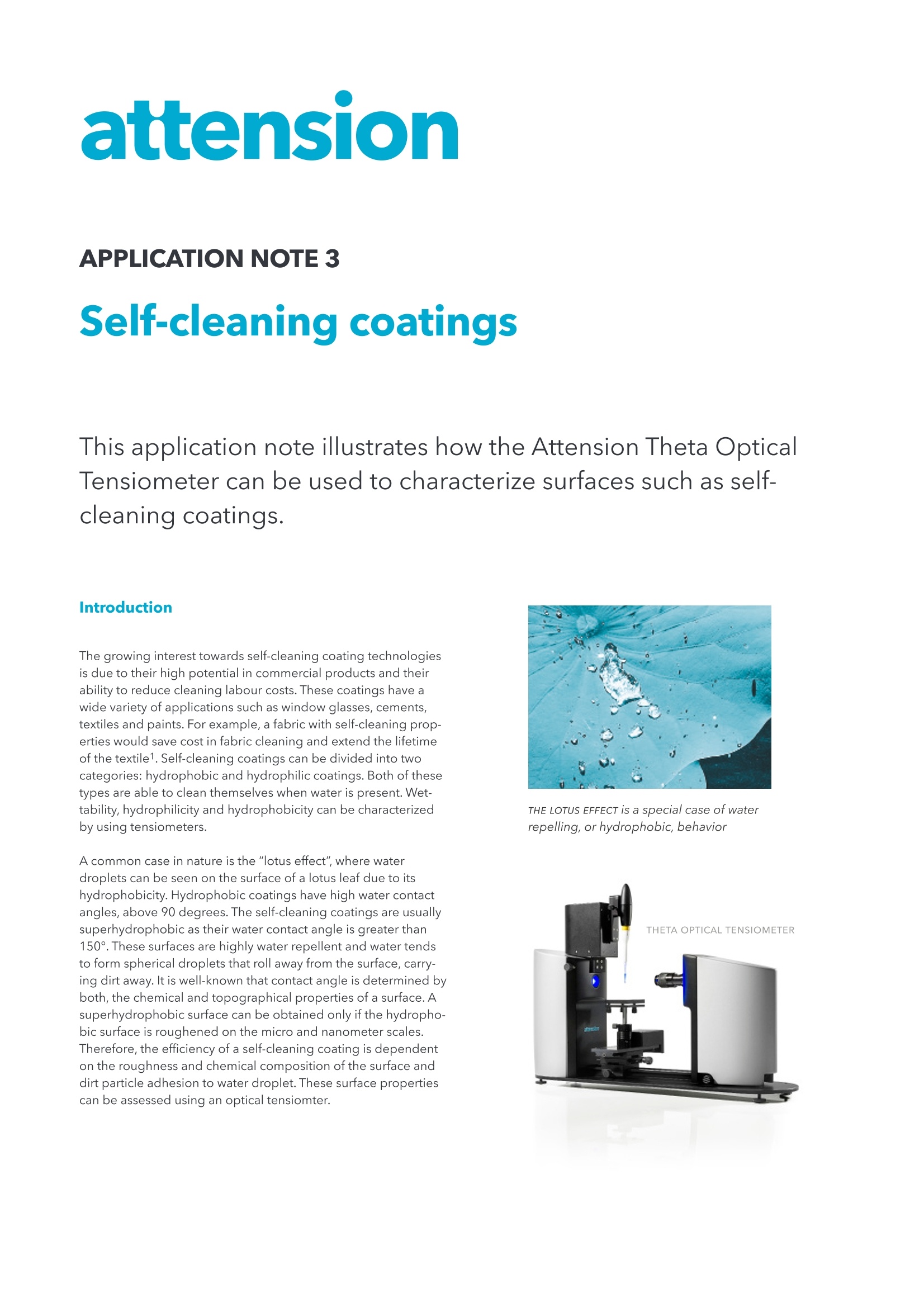
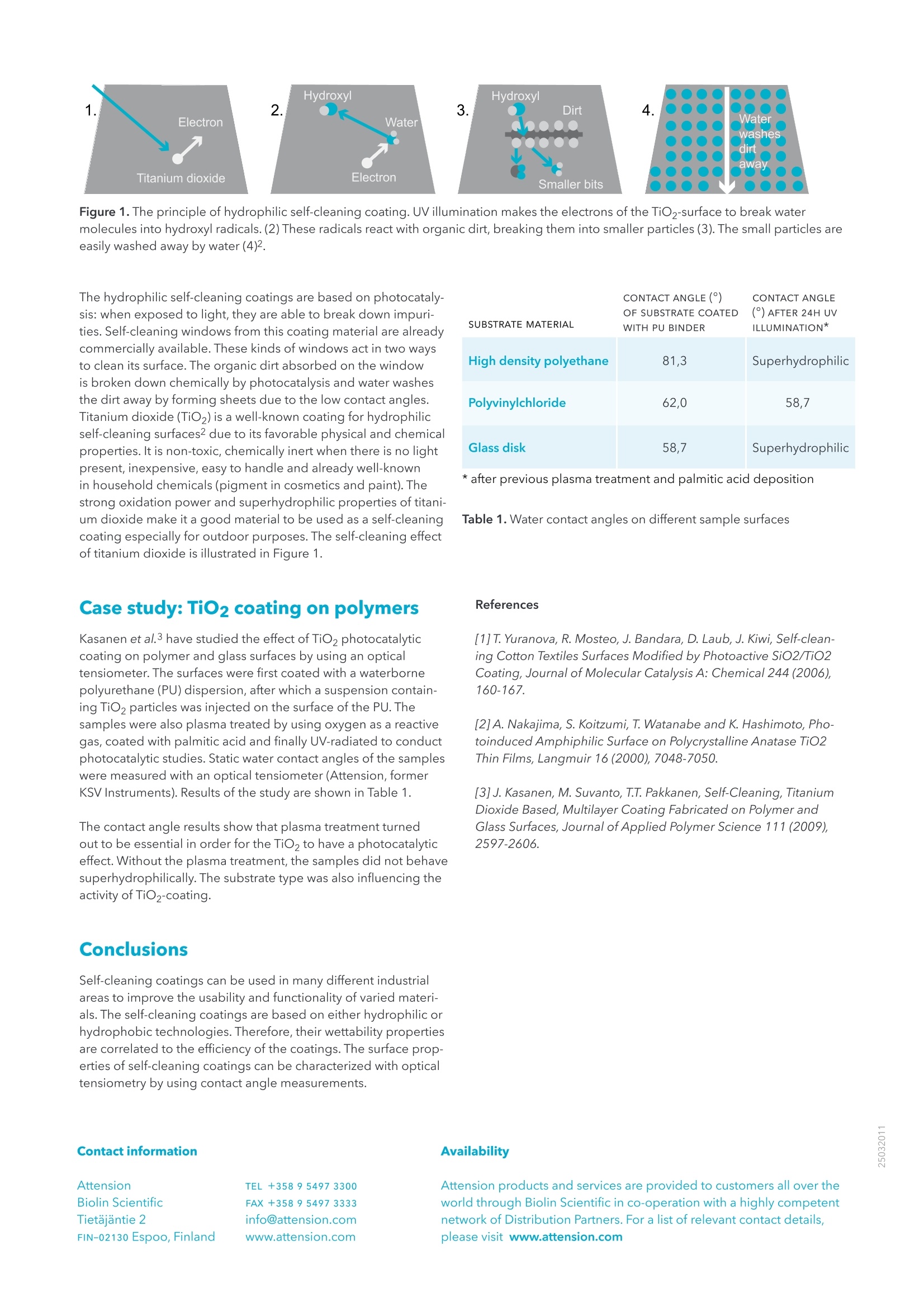
还剩1页未读,是否继续阅读?
瑞典百欧林科技有限公司为您提供《表面接触角测量仪在自清洁表面涂层应用》,该方案主要用于其他中--检测,参考标准--,《表面接触角测量仪在自清洁表面涂层应用》用到的仪器有Theta QC 光学接触角仪、Theta Lite 光学接触角仪、Attension Theta Flex 光学接触角仪
推荐专场
相关方案
更多
该厂商其他方案
更多






